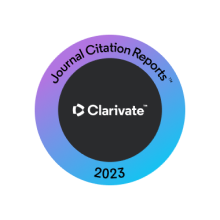Abstract
Objectives: The existence of a “weekend effect” for onset of acute myocardial infarction (AMI) has been suggested in the past, but the relation with the culprit vessel has not been investigated. MI due to left main coronary artery lesion represents a particularly serious life-threatening condition. Our study was aimed to assess the chronobiology of admission to the emergency department for AMI considered to be induced by a left main culprit lesion. Methods: We retrospectively reviewed patients who experienced an AMI due to a left main culprit lesion between January 1, 2008 and January 1, 2018 stratifying them according to the day of admission, on the basis of the symptom onset time; the 30-day cardiovascular mortality was also analyzed on the basis of the time of symptom onset. Results: Out of 1789 patients with AMI, 130 (7.2%, 104 males and 26 females, mean age 74.5 ± 8.1 years) had left main disease as the culprit lesion. Tuesday was significantly over-represented as the admission day ( p < 0.001 for Tuesday vs. other days; p ¼ 0.009 for Tuesday vs. Sunday, respectively). The 30-day cardiovascular survival was not different between patients admitted on Tuesday and those admitted on remaining days (Log-rank, Mantel Cox, p ¼ 0.43; Chisquare ¼ 0.611). A significant difference was noted in patients with AMI on Sunday versus remaining days (Log-rank, Mantel-Cox, p ¼ 0.005; Chi-square ¼ 7.96). The diameter of the left main artery was larger in patients admitted on Tuesdays than on Sundays ( p < 0.01). Conclusion: The relation between AMI onset and the day of the week is confirmed by our study, which also suggests that in case of a left main lesion, some delay of the weekend effect might be expected.
Recommended Citation
Rigatelli, Gianluca and Zuin, Marco
(2020)
"Occurence of left main occlusion on Tuesday: Chronobiology of acute myocardial infarction,"
Journal of the Saudi Heart Association: Vol. 32
:
Iss.
1
, Article 4.
Available at: https://doi.org/10.37616/2212-5043.1003
Creative Commons License

This work is licensed under a Creative Commons Attribution-Noncommercial-No Derivative Works 4.0 License.




